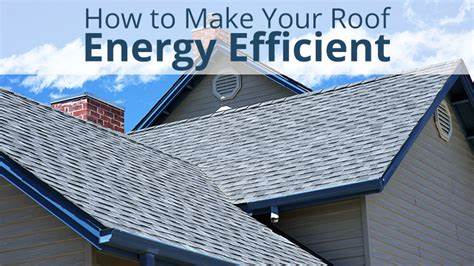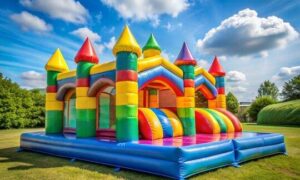Energy-efficient or eco-friendly roofs are a worthwhile investment for a property to increase its utility and make it a valuable asset in the long run. People are tired of paying huge sums of money for their energy expenses each month.
Therefore, it’s essential to implement all measures to a space that could potentially save you a lot of money. Considering the energy-efficient materials in the roof is a great idea to get rid of maximum energy consumption for the house to get better results.
In this article, we’ll discuss the benefits and ways to install an energy-efficient roof with the support of smart energy management. So, without further ado. Let’s get straight into this.
Steps to install an Eco-friendly roof on the property.
Installing an energy-efficient roof will outstandingly minimize energy consumption and costs for your home or building.
Follow the manual to successfully install the roof.
- Choose the suitable roofing material: Choose a roofing material designed for energy efficiency, such as metal roofing, cool roofs, or green roofs. Metal roofing is durable, lightweight, and reflects heat, making it an ideal option for hot climates. Remember, you will have to choose the roof material by keeping in mind the weather conditions you live in. Cool roofs use reflective materials to reduce heat absorption, while green roofs use vegetation to provide insulation and absorb rainwater.
- Inspect and repair the roof structure: Inspect the roof structure for any damage or leaks and fix them before installing the new roof. This will ensure that the new roof is installed on a solid foundation and will last longer. If a roof is being installed, followed by the instructions. The chances of flaws in the efficiency of the roof get minimized.
- Add insulation: Now Install insulation underneath the new roof to prevent heat transfer and improve energy efficiency. Select insulation that is designed according to particular climate and roof type. Insulation plays a pivotal role in preventing heat transmission and ultimately reducing your cooling costs to enhance smart energy management.
- Install ventilation: Install ventilation systems to improve airflow and reduce heat build-up in the attic or roof space. Proper ventilation can help prolong the life of the roof and lower energy costs.
- Install reflective coatings: Install reflective coatings on the roof to reflect sunlight and reduce heat absorption. These coatings can also extend the life of the roof and reduce maintenance costs. The shingles used within the roof installation are technologically maintained with the primary aim to reflect the light as much as possible.
- Hire a professional contractor: Hire a professional contractor who is experienced in installing energy-efficient roofs. They will be able to ensure that the roof is palced correctly and will provide maximum energy efficiency.
- Regular maintenance: Regular maintenance of the roof ensures that it continues providing energy efficiency. This involves roof cleaning, inspecting for damage, and repairing any issues as needed. You can do it yourself or get it done by a roofer monthly or annually.
What type of roof absorbs the most energy?
The roof that absorbs the most energy is a dark-colored roof made of materials with a high thermal mass. Roofs made of materials like asphalt, slate, or tile can absorb and store large amounts of heat energy from the sun, especially if they are dark in color.
This is because darker colors absorb more heat than lighter colors, and materials with high thermal mass are able to store more heat energy. However, it’s important to note that roofs that absorb a lot of heat energy can lead to higher cooling costs in the summer, especially in hot climates.
If you live in a warm climate, you may want to consider installing a roof made of a lighter-colored material, such as white or light-colored shingles or metal roofing, which will reflect more of the sun’s energy and help keep your home cooler. You can also consider using reflective coatings or insulation to reduce the heat absorbed by your roof.
What type of paint is best for roof cooling?
To cool a roof, you will want to use reflective paint, since it reflects a high percentage of the sun’s rays and reduces the amount of heat absorbed by the roof. These types of paints are often referred to as “cool roof coatings.” There are several types of cool roof coatings available, including.
- White elastomeric coatings: These coatings are water-based acrylic coatings that are easy to apply and can provide high reflectivity.
- Ceramic coatings: Ceramic coatings are made with tiny ceramic particles that help reflect heat and light away from the roof. These are the most popular coatings used in roofs to enhance their capability.
- Metal roof coatings: These are specialized coatings that are designed to be used on metal roofs. They can provide high reflectivity and durability.
- Silicone coatings: These are highly reflective and resistant to weathering, making them a good choice for roofs exposed to harsh weather conditions.
When choosing a cool roof coating, it’s crucial to consider factors such as the type of roof you have, the climate you live in, and the condition of your roof. It’s also an excellent idea to discuss with a professional roofing contractor to ensure that you choose the suitable coating for your needs.
How long does an energy-efficient roof last?
The lifespan of an energy-efficient roof depends on several factors, including the type of roof, the quality of installation, and the amount of maintenance the roof receives. Generally, energy-efficient roofs can last as long as traditional roofs, which can be anywhere from 15 to 50 years, depending on the materials used.
For instance, a metal roof can last up to 50 years, while a traditional asphalt shingle roof may only last 15 to 25 years. However, the longevity of an energy-efficient roof can be extended with proper maintenance, such as regular inspections, cleaning, and repairs as needed.
Additionally, some types of energy-efficient roofs, such as those made with high-quality materials or designed with advanced technologies, may have longer lifespans than traditional roofs.
It’s essential to choose a high-quality roofing material and have it installed by a professional to ensure the longevity of your energy-efficient roof. Regular maintenance and repairs can also help extend the lifespan of your roof and maximize its energy efficiency



































